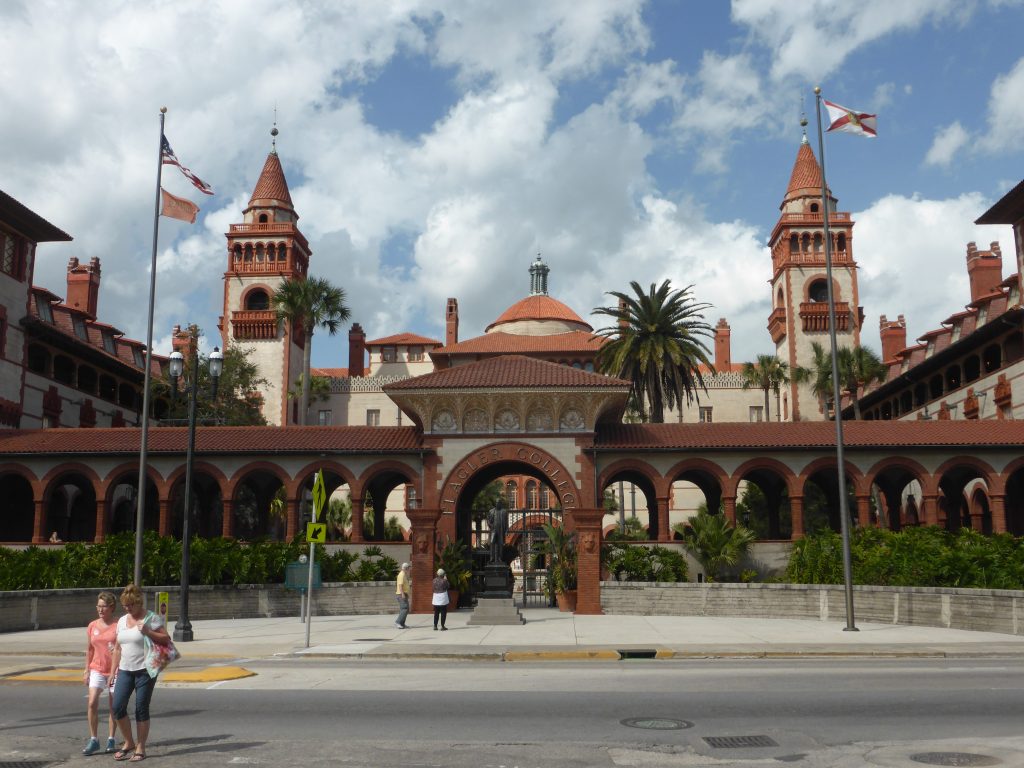I’ve now been in Florida for five days and still haven’t turned a wheel on the Southern Tier, but the great news is that Terry has arrived! After an emotional reunion at Orlando I drove Terry and his bike back to St Augustine where we decided he needed at least a couple of days rest before we started riding.
It goes without saying it has been a really difficult time for Terry and I could see he was still raw. Liz’s mum’s funeral had not yet taken place, but Liz had insisted he’d done everything he could to support her and she now wanted him to continue with his plans to ride the Southern Tier. But understandably he was torn between wanting to be at home and being back on the road and he was still conflicted about whether he was doing the right thing.
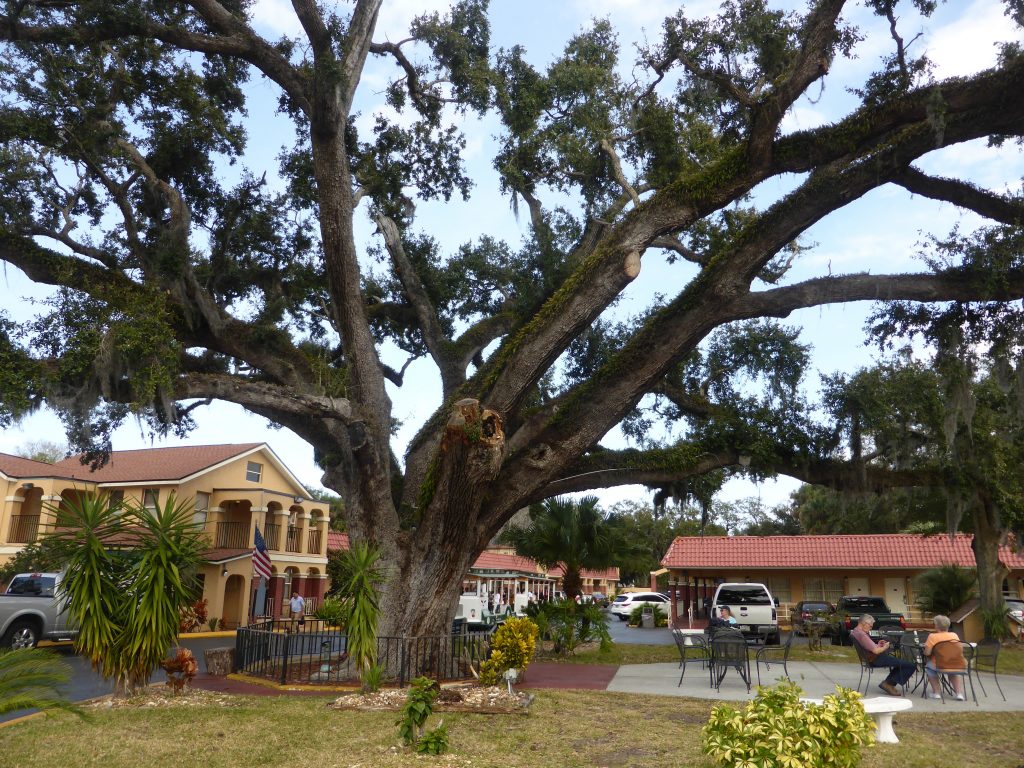
Having given him a potted history of what I was fast appreciating as one of the State’s most fascinating cities, he looked rather disappointed when the first place I led him to on our bikes was the car park of a motel just outside the historic district. Ahead of us, a trolley bus was also making a pilgrimage to the Howard Johnson Hotel car park with its cargo of eager tourists.
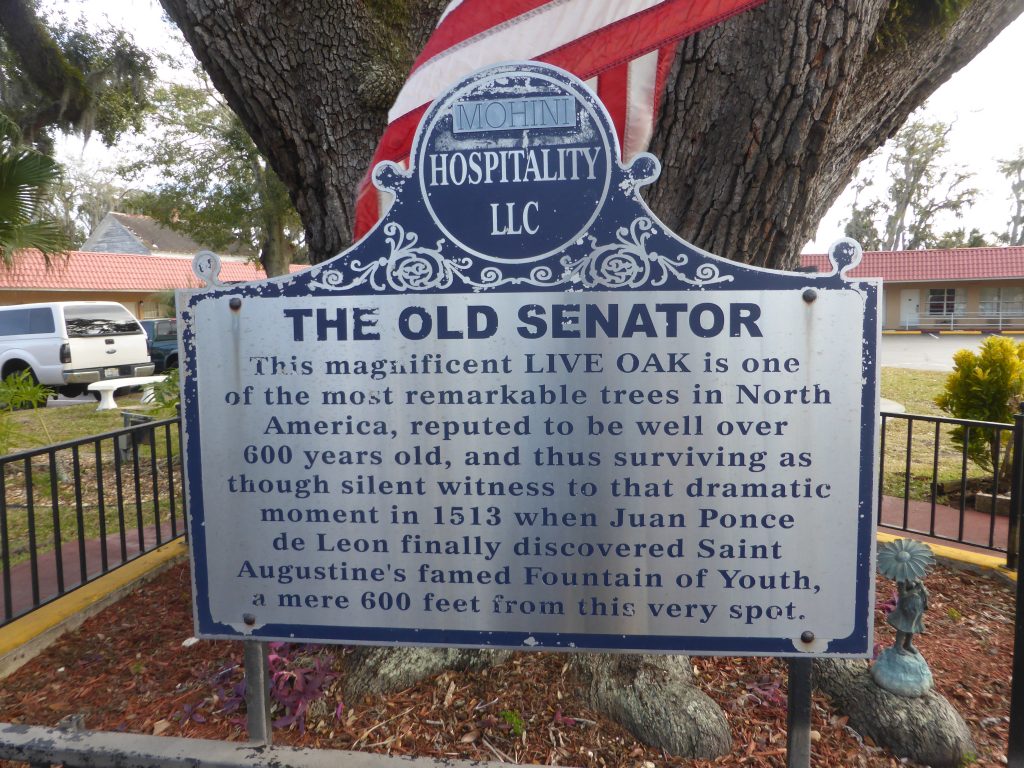
As we rounded a bend the reason for our visit became clear and I was pleased to see Terry was as impressed as I was, because there in front of us in the middle of the car park was St Augustine’s oldest resident – a massive Live Oak tree, named The Old Senator. With a girth of more than six metres and standing more than 17 metres high its massive arms reach far across the car park and you can only imagine the scenes it has seen over its six centuries of life.
The southern Live Oak is synonymous with the Deep South, and The Old Senator, like so many of its kind, was dripping with clumps of Spanish Moss. Although producing a very hard wood, it’s very difficult to work with, although that didn’t stop the US Navy using it as it building material of choice. The USS Constitution, launched in 1797, used Live Oak in its construction with the incredibly strong wood earning Constitution the moniker of ‘Old Ironsides’.
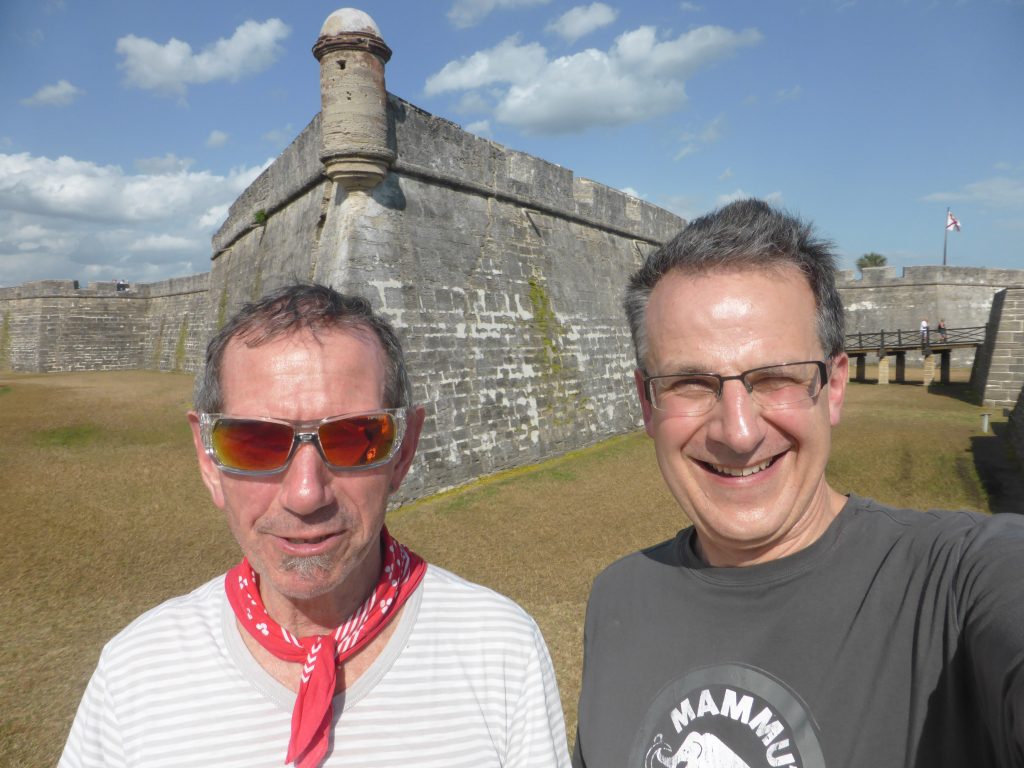
History lesson done, I then tried to settle Terry under the younger Live Oak at the Colonial Oak Music Park, but sadly the venue was closed, so we contented ourselves touring St Augustine’s plethora of historical momuments marking everything from the arrival of Ponce de Leon on these shores in 1513, to some of the early settlers including French Huguenots and Minorcans, brought to Florida in 1768 to work on an indigo plantation and later given sanctuary by the British.
One memorial was particularly poignant and sobering. Featuring four heads cast in brass, the St. Augustine Foot Soliders monument is dedicated to those who took part in the Civil Rights movement in the city during the 1960s. It describes how campaigners took part in marches, pickets, wade-ins, attended rallies and provided safe haven during those tumultuous years.
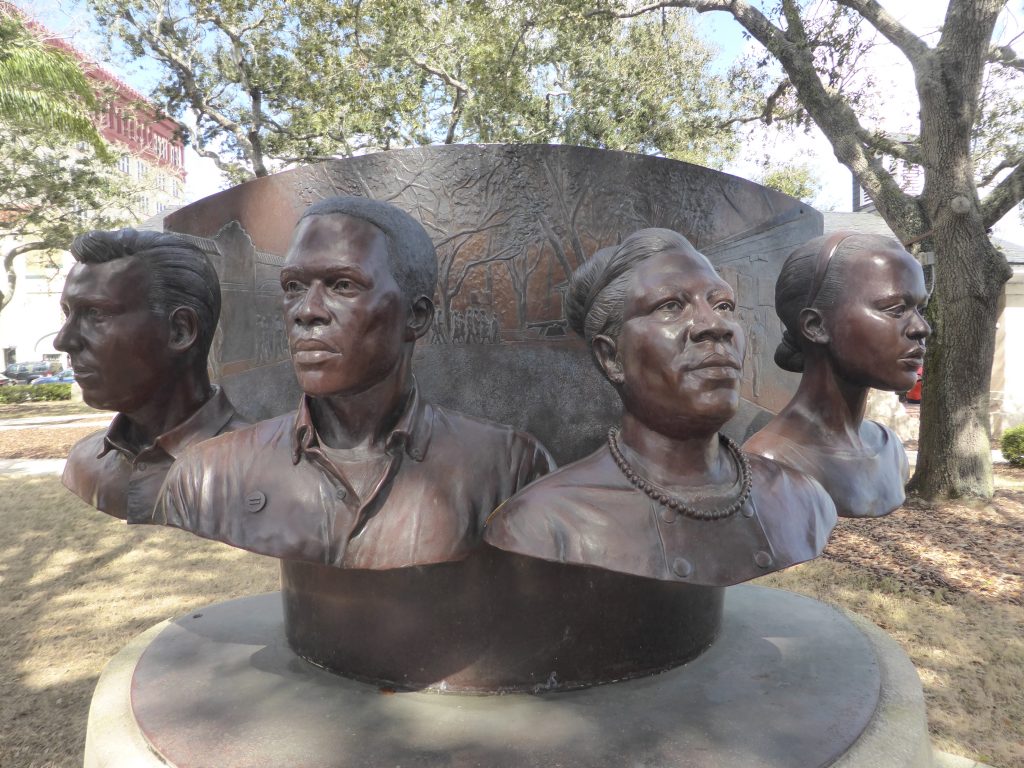
‘They persisted in the face of jailings, beatings, shootings, loss of employment, threats and other dangers,’ the wording read beneath the heads. ‘They were Foot Soldiers for Freedom and Justice whose efforts and example helped to pass the landmark Civil Rights Act of 1964’.
With a working knowledge of the civil rights movement we knew it would be a story we would be encountering along our route, bit I don’t think either of us expected to come face to face, quite literally, with what had happened, so early in our journey. For most British people Florida is all about theme parks and beaches, but you don’t need to look very far to find a very different past.
So if anyone ever tells you the U.S. has no history send them to St Augustine. There’s plenty to keep them occupied for years. The city had surprised and intrigued us and had also gone some way to helping us regroup and gather our thoughts before heading out on the long road west. It was time to move on – the Southern Tier awaits.
